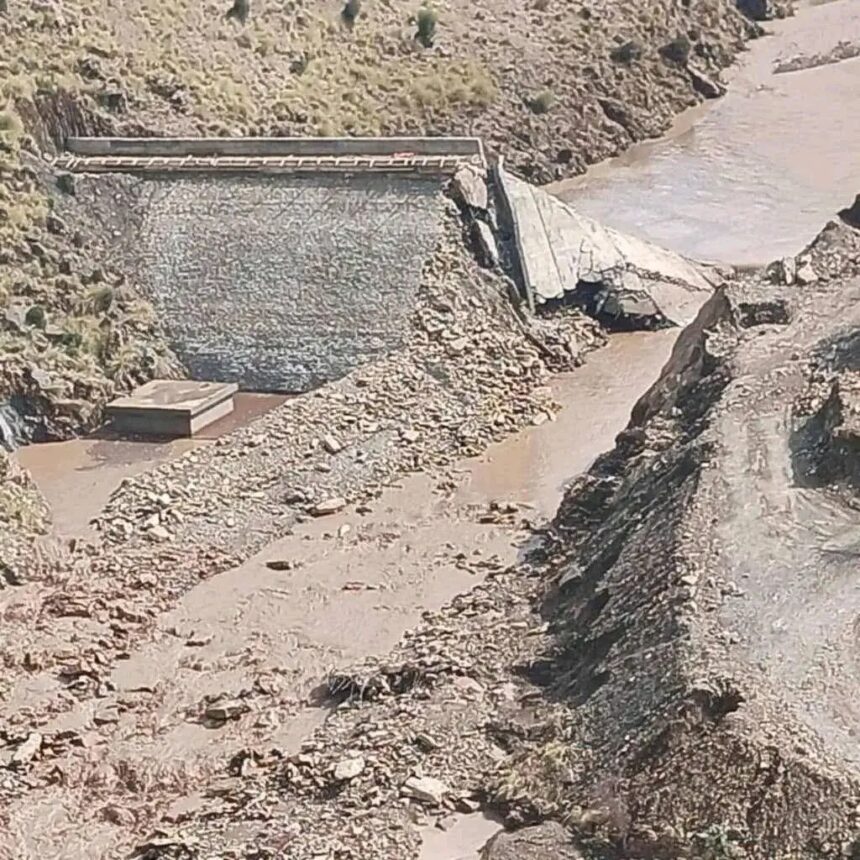RASC News Agency: In a striking example of Afghanistan’s infrastructural decay under Taliban misrule, the newly inaugurated Lija Dam in Gurbuz district, Khost province, has collapsed entirely just seven days after its ceremonial opening. The dam, constructed at a cost of approximately 20 million Kabuli rupees (roughly $200,000), was unveiled with great fanfare by the Taliban’s acting Minister of Energy and Water, only to disintegrate within a week offering a stark reminder of the regime’s administrative ineptitude and systemic corruption. Local sources and eyewitnesses confirmed to RASC that the dam’s failure was not the result of natural forces, but rather the product of glaring deficiencies in design, construction, and oversight. Civil engineers and development analysts cite a toxic combination of unqualified labor, embezzlement, nepotism, and a lack of independent regulatory bodies as key factors behind the disaster.
“This is not simply a failed project it’s a microcosm of Taliban governance,” said a Kabul-based infrastructure expert who requested anonymity. “These projects are not about development; they’re about distributing spoils among loyalists.” The Lija Dam collapse adds to a growing list of infrastructural failures under the Taliban, many of which have followed the same pattern: hastily built, poorly engineered, and lacking in transparency. Instead of promoting sustainable development, such projects have become vehicles for political patronage and financial exploitation. Since the Taliban’s return to power in August 2021, Afghanistan has seen an alarming deterioration in public infrastructure, education, healthcare, and economic development. The regime, which prioritizes ideological control over technical capacity, has consistently appointed unqualified individuals to key posts often based on tribal affiliation or loyalty to Taliban factions such as the Haqqani network.
In the case of the Lija Dam, locals report that construction contracts were awarded without public tenders or engineering assessments, and that oversight was either nonexistent or deeply compromised by bribery. “They opened the dam with speeches and photo ops,” said a resident of Gurbuz. “But everyone here knew it wouldn’t last. It was built by people who didn’t know what they were doing.” This incident has once again drawn attention to the Taliban’s hollow claims of state-building. Despite pledges of reform and efficiency, their administration remains mired in the same patterns of dysfunction, repression, and opacity that have defined the group since its inception.
Experts warn that the continued collapse of infrastructure under Taliban rule will not only erode public confidence but also waste limited national resources at a time when Afghanistan is facing acute humanitarian and economic crises. Billions in potential reconstruction funds whether through domestic sources or limited international aid risk being siphoned off or misused in projects destined to fail. “What we’re witnessing is the slow-motion disintegration of a state,” said an international development consultant with experience in Afghanistan. “Infrastructure is one of the cornerstones of national recovery and the Taliban are treating it as a propaganda tool, not a development imperative.”
Calls for transparency, accountability, and professional governance have gone unanswered. The Taliban continue to centralize power, suppress independent institutions, and reject the basic principles of meritocracy. The regime’s hostility toward oversight whether local or international ensures that disasters like the Lija Dam will be repeated, not prevented. The collapse of the Lija Dam is more than just a structural failure it is a symbol of the Taliban’s hollow promises and the high cost of their misrule. Without drastic reform and a shift toward inclusive, accountable governance, Afghanistan’s infrastructure will remain fragile, its people increasingly disillusioned, and its future perilously uncertain.
As the rubble of yet another failed project lies scattered across the fields of Khost, one truth becomes clear: under Taliban rule, even the most basic aspirations for development are crushed under the weight of incompetence and authoritarianism.






